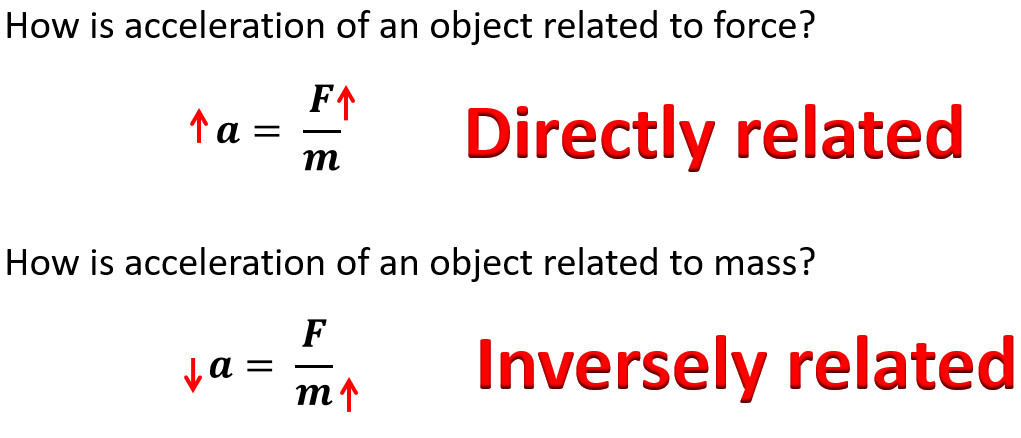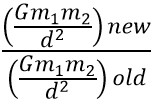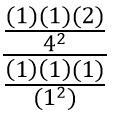Rule of Ones: How Many Times Different
How to determine how an unknown variable changes when you change any other by a factor. For example: If you double force what happens to acceleration?
Basic Equation Analysis
Basic Equation Analysis can be done using any equation as seen on our equation sheet.
Question to use for the example:
What happens to acceleration when force goes up?
1. First figure out the equations most related:
- Here we have a acceleration and force:
- F = ma
2. Rearrange the formula for what we are analyzing (acceleration here)
- a = F/m
3. Analyze
- If everything was the same or (1x)
- a = 1/1 or 1
- If you make force bigger what happens to acceleration (make force 2)
- a = 2/1 or 2 which is bigger
- When force goes up acceleration goes up so force and acceleration are directly related

Determining Ratio’s (Rule of Ones)
One times a number is that number. This is the main idea behind the rule of ones. I do not need to know every variable to determine what factor one will change by when others change. Follow my example which can be used for any equation.
Example 1: How much will acceleration change if you double force?
1. Determine the equation most related to the givens and the unknown
- a= ?
- F = 2x
- F=ma
2. Rearrange it for what you are analyzing
- a = F/m
- The equivalent of a is F/m
3. Turn it into a ratio of new equivalent/old equivalent
- (F/m new) divided by (F/m old)
4. Form the ratio: plug in changes in the new with the new factor or one if nothing is said about it. On the bottom plug in ones for everything since you are comparing it to the original.
- F = 2 times (double)
- a = ?
- (F/m new) divided by (F/m old)
- (2/1)/(1/1) = 2
An answer of 2 means acceleration will be two times its original
Example 2: How much will the force of gravity change if you double one mass and quadruple the distance?
1. Determine the equation most related to the givens and the question
- Fg = ?
- m1 = 2
- d = 4
2. Rearrange it for what you are analyzing determining the equivalent
- already rearranged
- equivalent:

3. Turn it into a ratio of new equivalent/old equivalent
4. Form the ratio: plug in changes in the new with the new factor or one if nothing is said about it. On the bottom plug in ones for everything since you are comparing it to the original.
- Fg = ? m1 = 2 d = 4

An answer of 1/8 or 0.125 means the force of gravity will be 1/8 or 0.125 times the original.
An Extension to the Rule of Ones:
When you are given an original magnitude. Then told other things change by factors and are asked for the new magnitude.
Example 3: The force of gravity on an object is 860 N. What will be the new force of gravity if you double one mass and quadruple the distance?
Start this the same way you did for example 2 above and do not include 860 N in the first steps. Then at the end take the factor which was 1/8 or 0.125 and multiply it by the original number.
- (0.125)(860) = 107.5 N
107.5 Newtons would be the new force on the object.
Links
- Back to the Stickman Physics Home Page
- For video tutorials and other physics resources check out HoldensClass.com
- Find many of your animation resources in one place at the StickMan Physics Gallery




